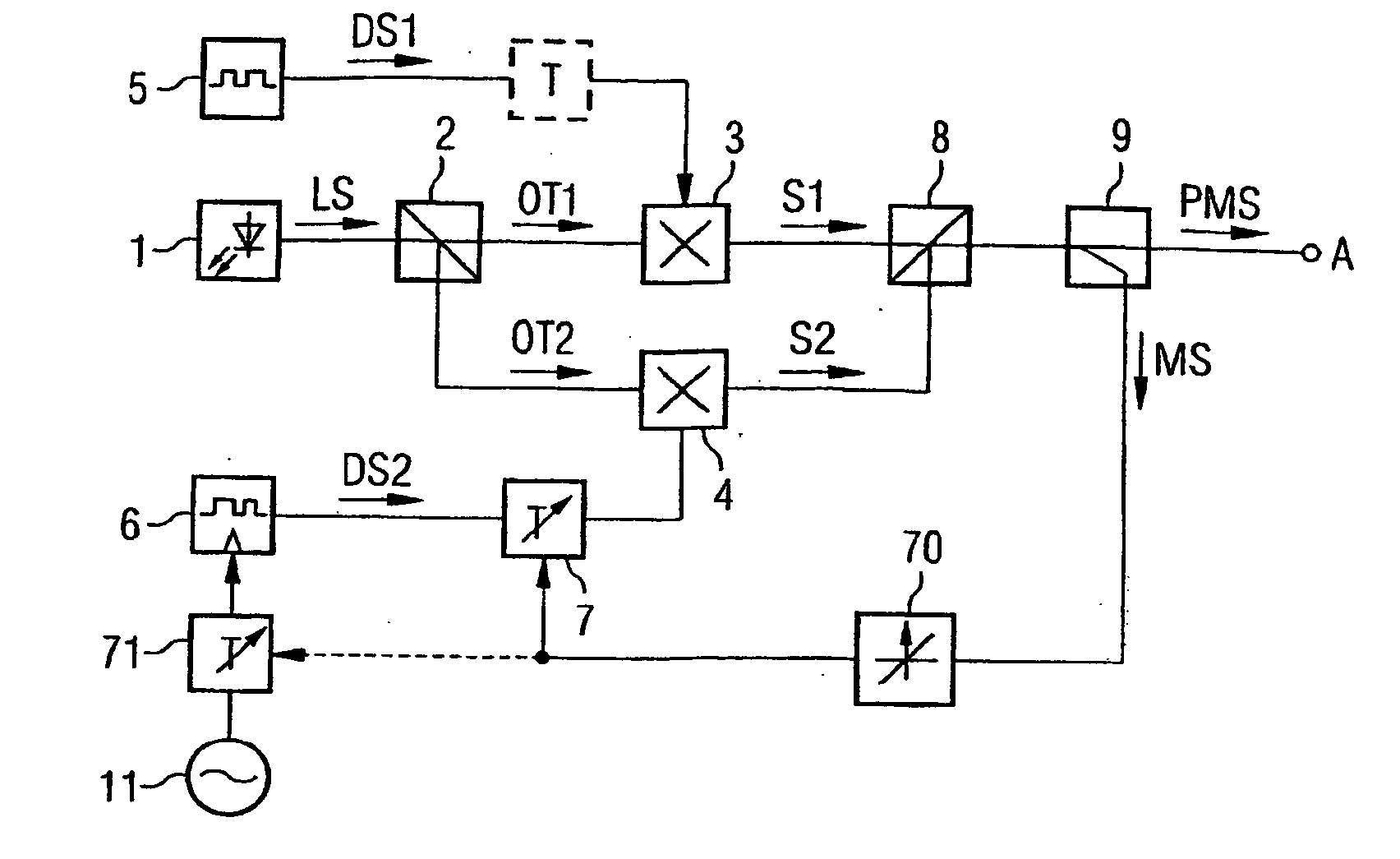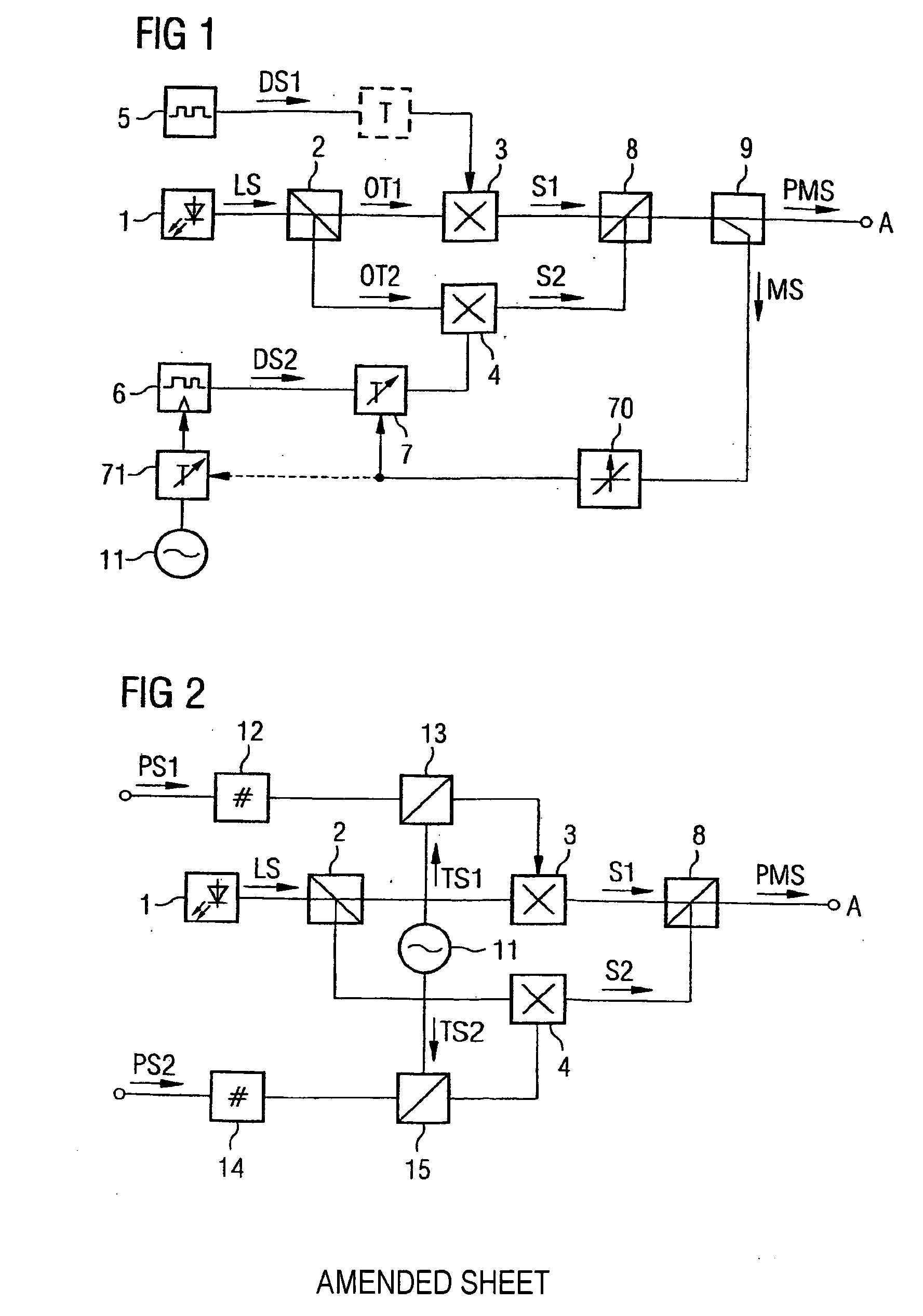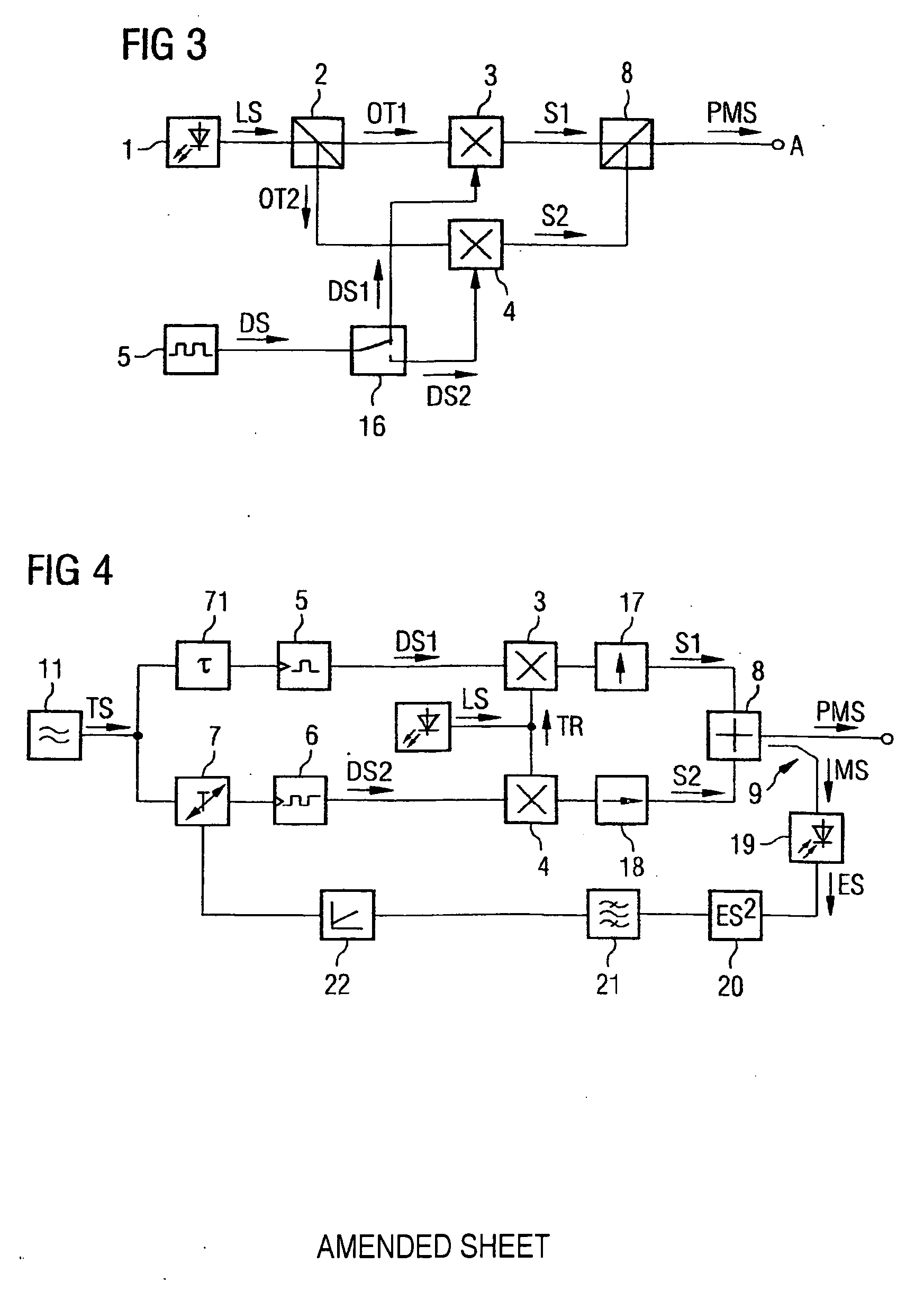Method and arrangement for reducing the signal degradation in an optical polarisation-multiplex signal
a technology of optical polarisation and multi-plex signal, applied in the field of method and system for reducing signal degradation, can solve the problems of inability to achieve the desired doubling of transmission capacity and inability to error-free transmit polarisation-multi-plex signals
- Summary
- Abstract
- Description
- Claims
- Application Information
AI Technical Summary
Benefits of technology
Problems solved by technology
Method used
Image
Examples
Embodiment Construction
[0023]FIG. 1 shows a transmission arrangement for transmitting a PMD signal. The typical embodiment assumes that the light has been polarised in linear fashion and amplitude modulation has been assumed for ease of understanding. However, other (orthogonal) polarisation types and other modulation types are also possible.
[0024] A coherent light source (laser) 1 generates a laser signal LS that is divided in an optical polarisation beam splitter 2 into two orthogonal components, carrier signals OT1 and OT2. Each of these is fed to a modulator of its own, such as a Mach-Zehnder modulator 3 and 4. The modulator 3 is controlled by a first electrical data source 5, which generates a first data signal DS1. A second electrical data source 6 generates a second data signal DS2, which is fed via an electrical delay element (phase shifter) 7 to the second modulator 4. The modulated signals S1 and S2 are fed together via a polarisation-beam combiner 8 (meaning any combiner that is suitable for c...
PUM
 Login to View More
Login to View More Abstract
Description
Claims
Application Information
 Login to View More
Login to View More - R&D
- Intellectual Property
- Life Sciences
- Materials
- Tech Scout
- Unparalleled Data Quality
- Higher Quality Content
- 60% Fewer Hallucinations
Browse by: Latest US Patents, China's latest patents, Technical Efficacy Thesaurus, Application Domain, Technology Topic, Popular Technical Reports.
© 2025 PatSnap. All rights reserved.Legal|Privacy policy|Modern Slavery Act Transparency Statement|Sitemap|About US| Contact US: help@patsnap.com



